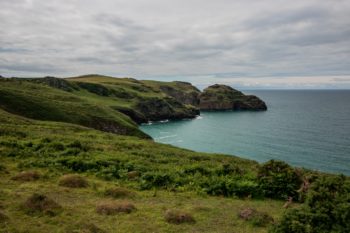Case Study: Seagrass Seeds of Recovery
The world faces both a climate emergency and nature crisis, battling pollution, climate change, and biodiversity loss. As we enter the UN Decade on Ecosystem Restoration, nature-based solutions have become recognised as key to addressing both challenges.
The Seagrass Seeds of Recovery project will provide a blueprint for restoring seagrass in the UK, creating opportunities to improve biodiversity and reduce carbon and nitrogen. Seagrass meadows enhance the stability of the coastal zone, locking carbon into the seabed, improving water quality, and creating a habitat for small animals, which enhances the resilience of coastal ecosystems. The project will provide a road map to unlock the ‘blue carbon’ potential (carbon captured by marine ecosystems) of seagrass restoration for the water industry and beyond.
Seagrass restoration is innovative in and of itself. In particular, the development of a seagrass nursery will be world-leading providing carbon offsets for “blue carbon” and create a seagrass habitat from dredge sediment. This has not been done in the UK before. Seagrass growth enhancement from process emissions will also be a world first.
Recent estimates suggest that seagrass loss in the UK may be as high as 92%. In the Essex and Suffolk areas thousands of hectares of seagrass have been lost. In the 1970s at least 380 hectares (≈380 football pitches) of seagrass could be found in the Stour and Orwell Estuaries which has all but disappeared today. These 380 hectares would have once supplied over £20 million pounds worth of denitrification and nitrogen burial services, stored over 41,000 tonnes of carbon, harboured 4.6x the abundance of fish, and increased the strength of coastal sediments by up to tenfold and substantially increasing coastal resilience during extreme weather events.
This project goes beyond simple restoration to create blue carbon frameworks to finance roll out at scale within the water industry and beyond. Carbon offsets for ‘blue carbon’ would be a new opportunity for the UK. Progress on policy to aid the development of a blue carbon finance framework (equivalent to the Woodland Code) would enable carbon credits to be issued, which would fund further restoration activities. There is presently huge demand for this with businesses and industries looking to move beyond tree planting. Investment in a blue carbon framework will help unlock this possibility for the water sector in the UK and internationally.
The project delivers an opportunity for the water industry to engage early with the UN Decade On Ecosystem Restoration 2021-2030 and indeed the wider UN Sustainable Development Goals (linked to the 2030 Agenda for Sustainable Development). It will be the first time the water industry has explicitly engaged with a United Nations Environment Programme global initiative and will be doing so with an official ‘Supporting Partner’ (Project Seagrass).
Looking outside the sector for solutions has helped the project team to work with a wider range of partners. They started developing the project idea and partnerships in advance of the competition opening and this really helped when it came time to write the proposal. In addition, the experience has supported development of the wider innovation culture and process at Affinity Water.
The Ofwat Innovation Fund has been established to help the water sector in England and Wales grow its capacity to innovate and meet the needs of customers, society, and the environment. It aims to achieve this by supporting ambitious water company initiatives that demonstrate bold new approaches to innovation.
The first round of the Innovation in Water Challenge supported projects that went beyond the sector’s business-as-usual innovation practices and aligned with one or more of Ofwat’s five strategic innovation themes. The themes are five areas that Ofwat has identified as challenges for the water sector to overcome and that would benefit from additional innovation.



